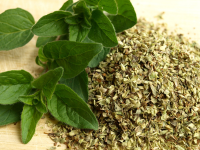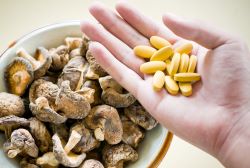Eurofins US Food Announcements & News
Search >>
In the world of dietary supplements, ingredient authenticity is directly linked to quality, compliance, safety, and consumer trust. With the complexity of botanical materials and the limitations of individual testing techniques, relying on a single method for identity verification can be risky. That’s where orthogonal methods come in. Read to learn more.
A client submitted a batch of Turmeric Powder (Curcuma longa rhizome) for routine identity and quality verification. The samples were were expected to match the fingerprint of authentic turmeric reference materials. Learn how Eurofins detected detected adulteration in the client's submitted sample.
As a widely used culinary and medicinal herb, oregano is expected to meet strict botanical specifications. Read our case study to learn how Eurofins analysts used HPTLC and microscopy to uncover botanical adulteration in an oregano sample submitted for identity verification and quality assessment.
Discover how the Eurofins Botanicals and LeafWorks partnership are advancing transparency in the booming functional mushroom market with species-specific DNA ID testing. Ensure product authenticity, support label claims, and meet regulatory standards with cutting-edge qPCR assays and comprehensive analytical solutions.
In the world of dietary supplements, where natural ingredients are marketed for health and wellness, the quality and identity of botanicals are non-negotiable. Consumers rely on accurate labeling, consistent formulation, and, most importantly, safe and authentic ingredients. Continue reading to learn more about ensuring safety in botanical supplement products.
In an industry rooted in nature but constantly evolving with science, botanical supplements are experiencing a quiet revolution. Innovation isn't just about discovering exotic new plants—it's about precision, purpose, and progress at every step of product development. Check out our infographic on your botanical product's steps, from seed to shelf.
Certain seasonal botanicals may play a vital role in supporting women's health and overall wellness. Shatavari, dong quai, and milky oats are known for their deeply nurturing qualities, fostering balance, resilience, and gentle strength within the body. Click the link to continue exploring the benefits of these plants and their contributions to health and well-being.
In the world of dietary supplements and botanical materials, accurate identity testing is essential for product safety, regulatory compliance, and consumer confidence. One of the most effective tools in this area is Thin Layer Chromatography (TLC), particularly in its high-performance form (HPTLC). Continue reading to find an overview of HPTLC, compendial HPTLC methods, selecting a fit-for-purpose method, the acceptance criteria, and the advantages and limitations of compendial methods.
An entrepreneurial brand wanted to develop a shelf-stable liquid formula that could deliver proven joint-supporting ingredients in a convenient, consumer-friendly format. They turned to The National Food Lab for help to bring their concept from ideation to execution with scientific rigor and market-readiness. Keep reading to find out how we handle these situations.
Botanical innovation is reshaping how companies approach sourcing, formulation, and delivery. Learn how forward-thinking brands are aligning strategy, ensuring scalability, and meeting rising consumer and regulatory demands.
















